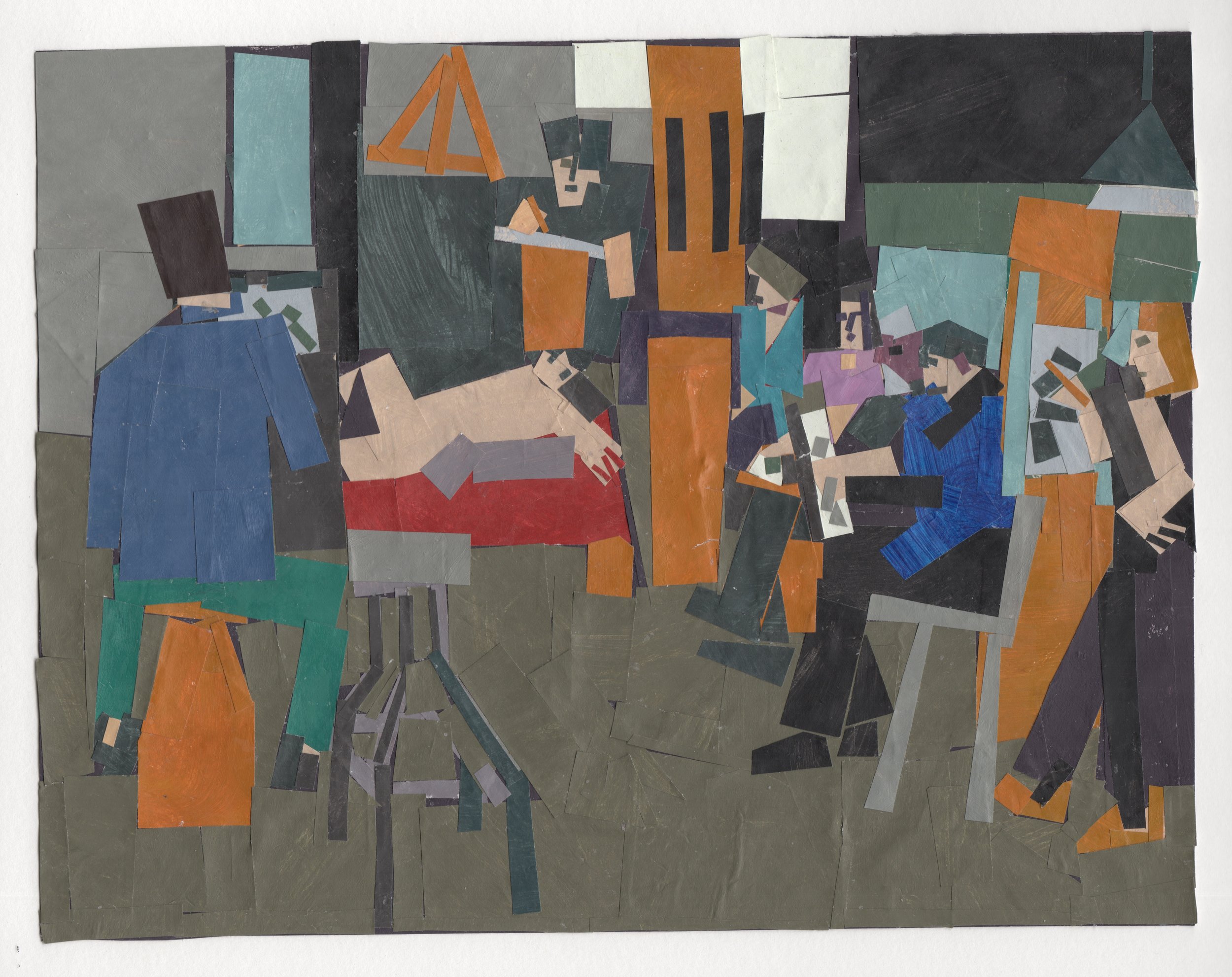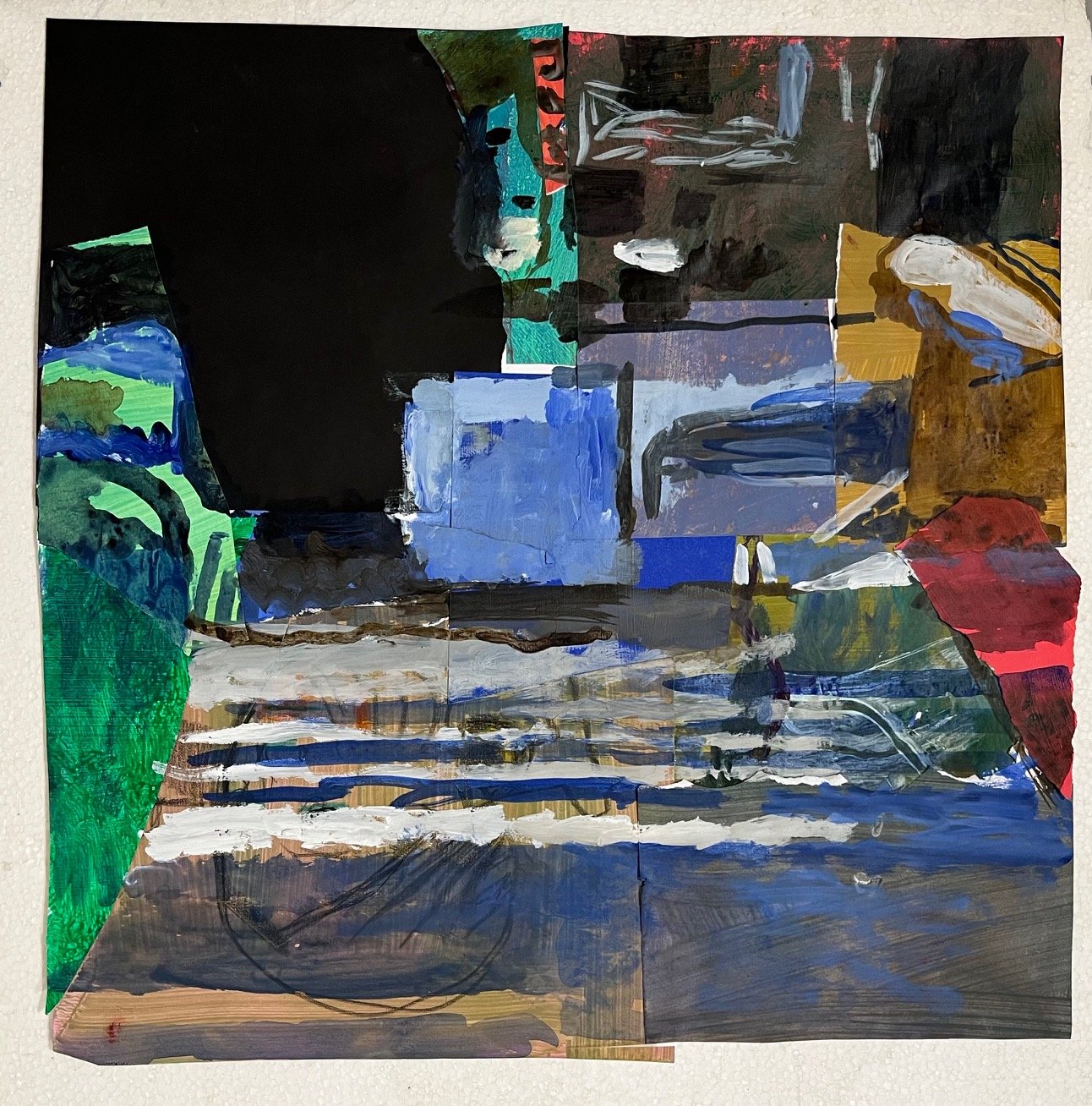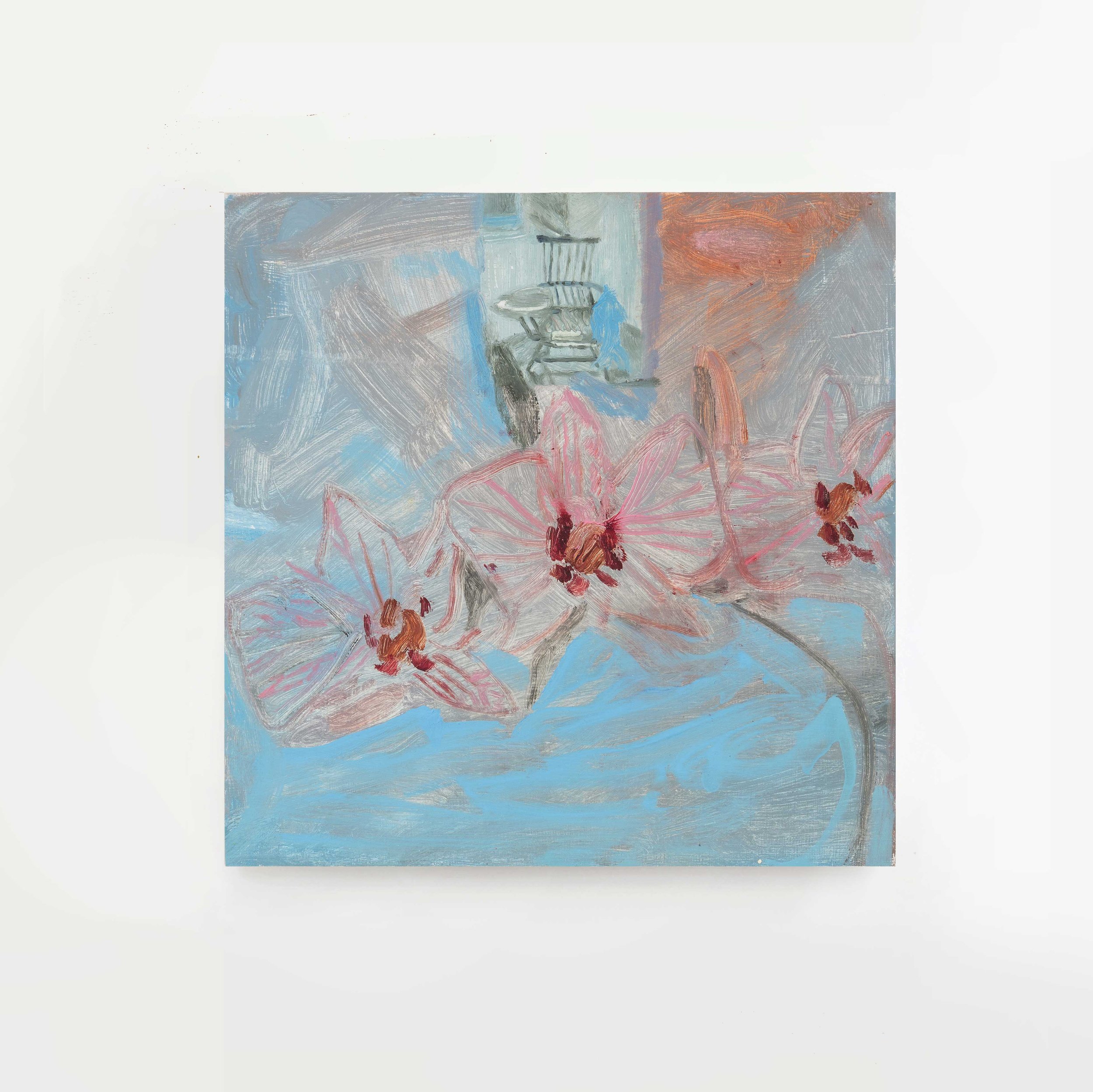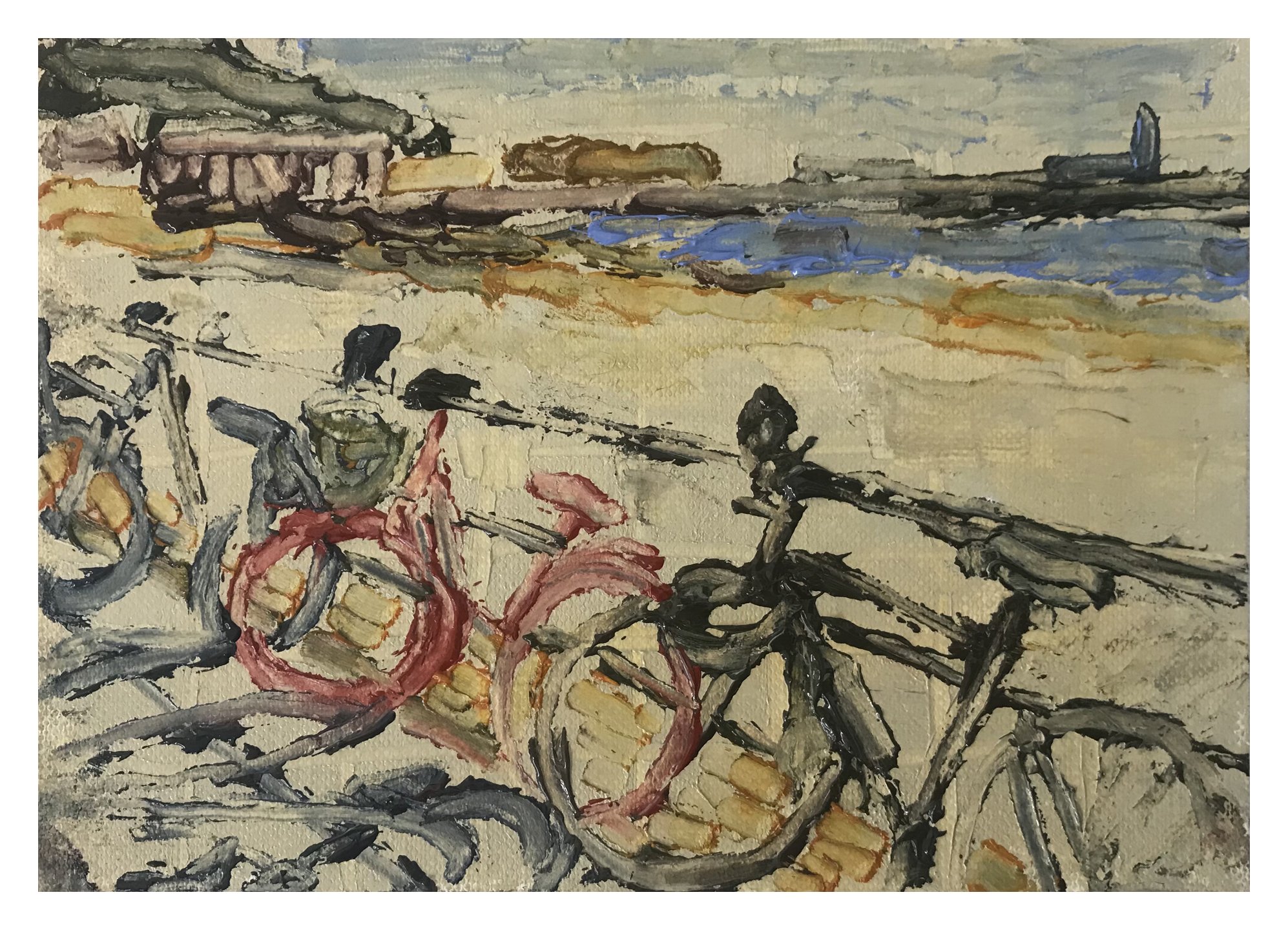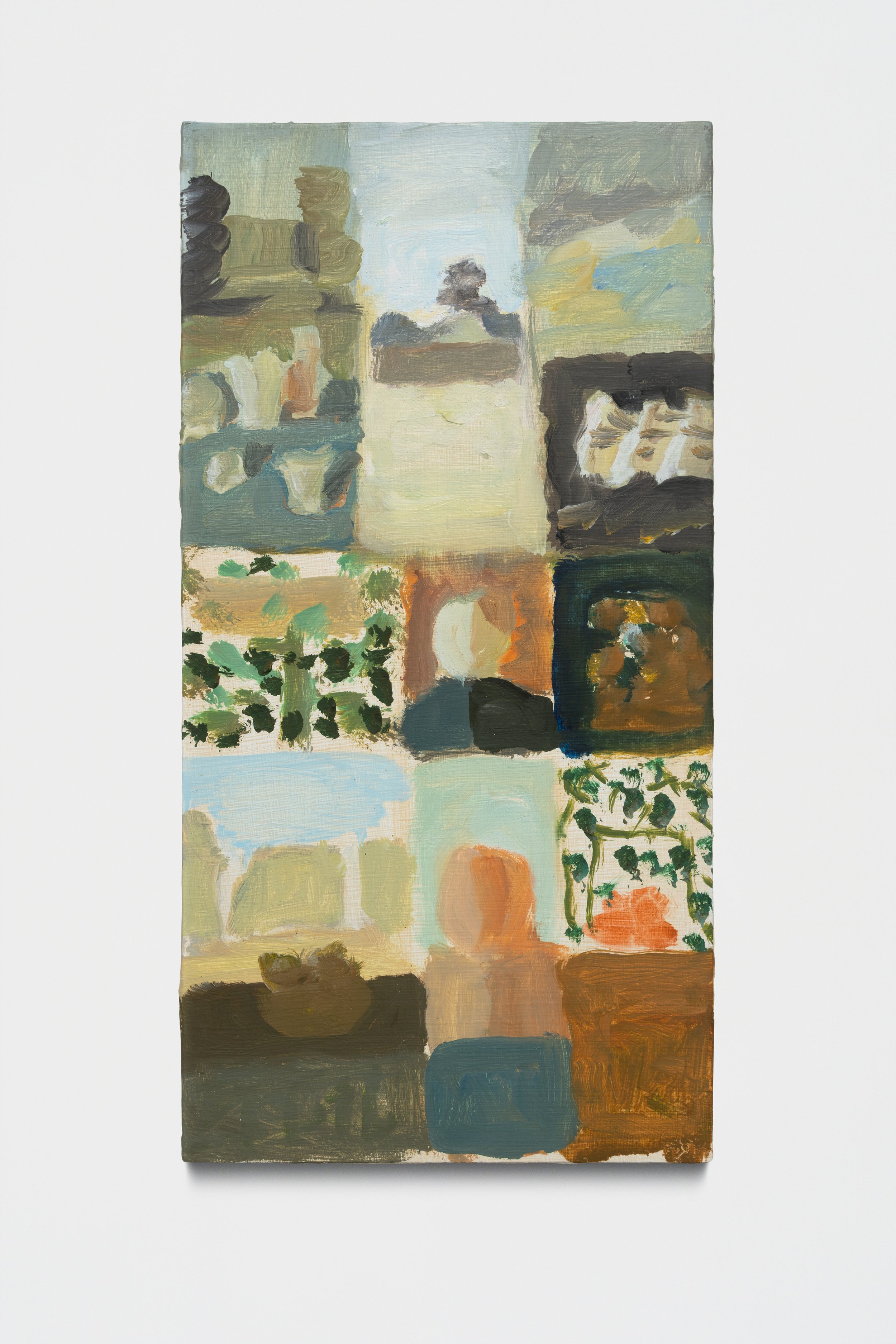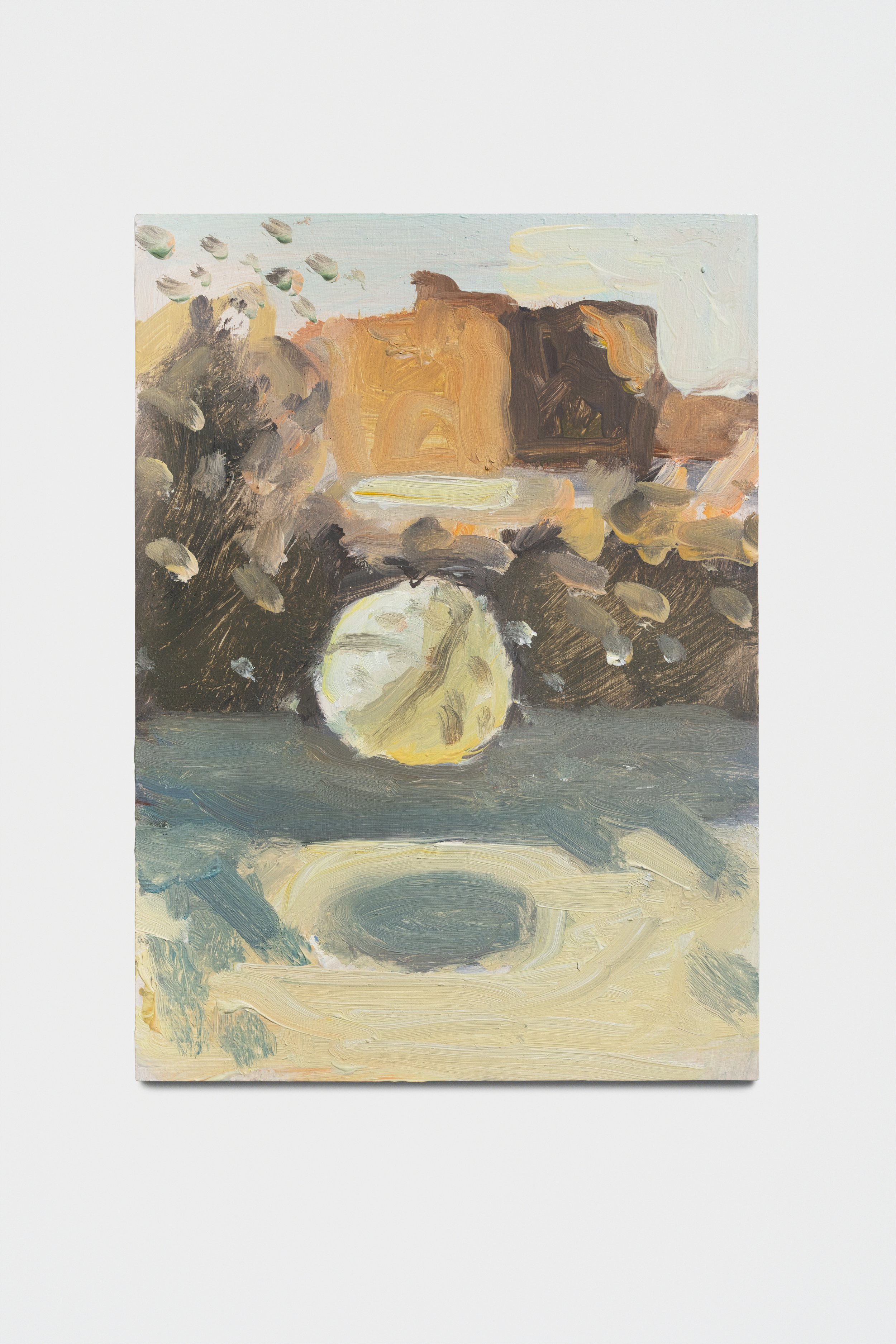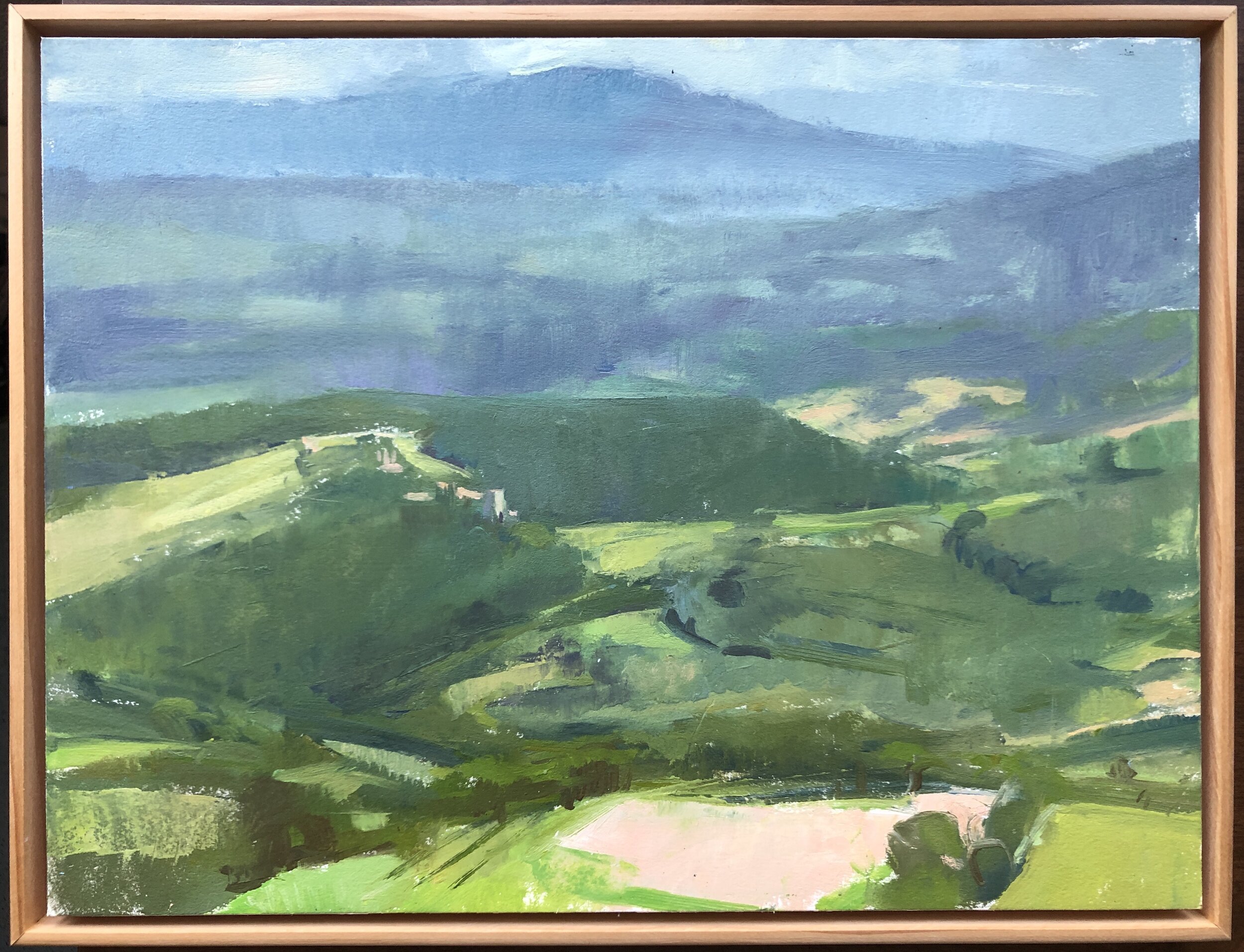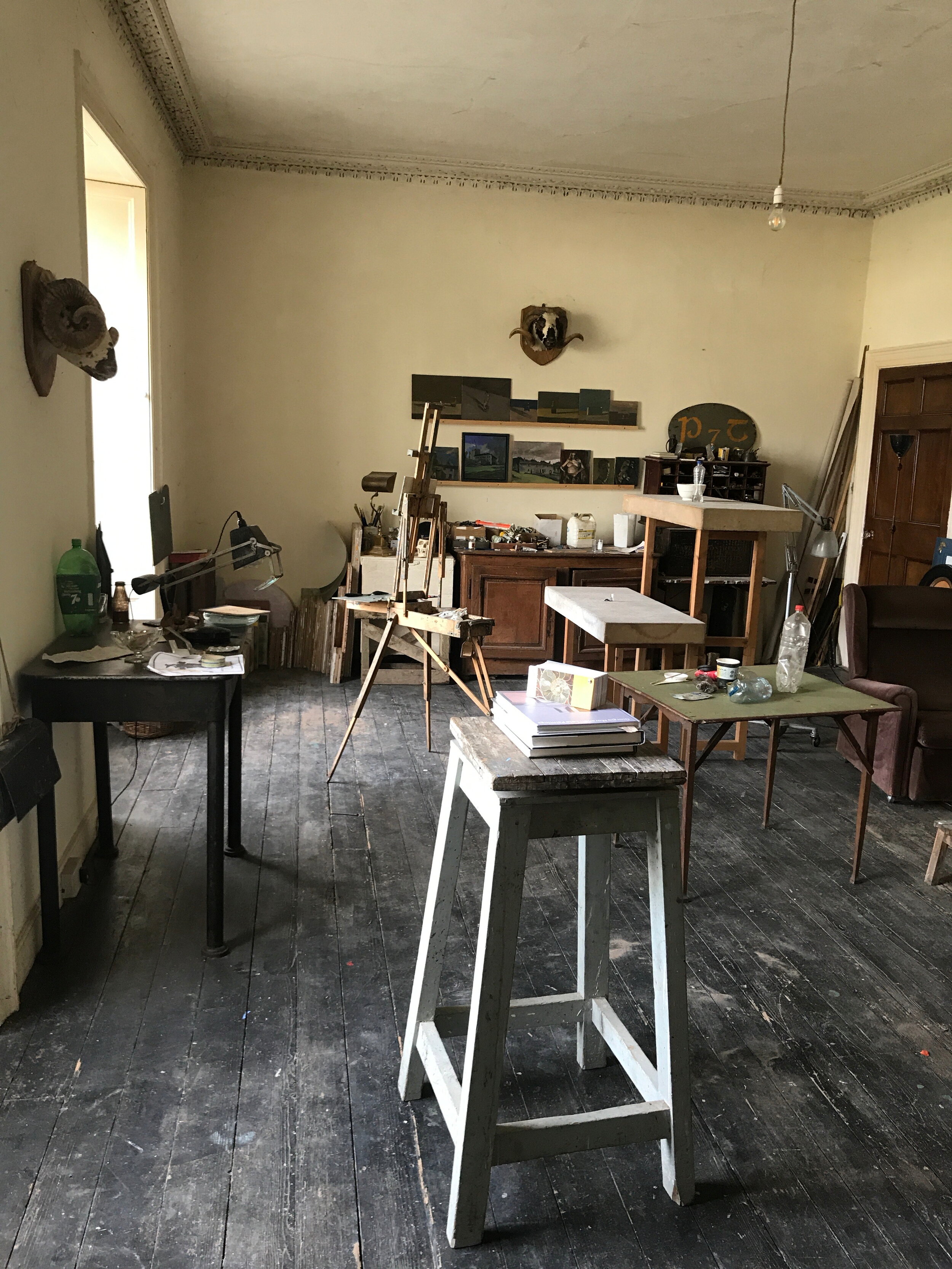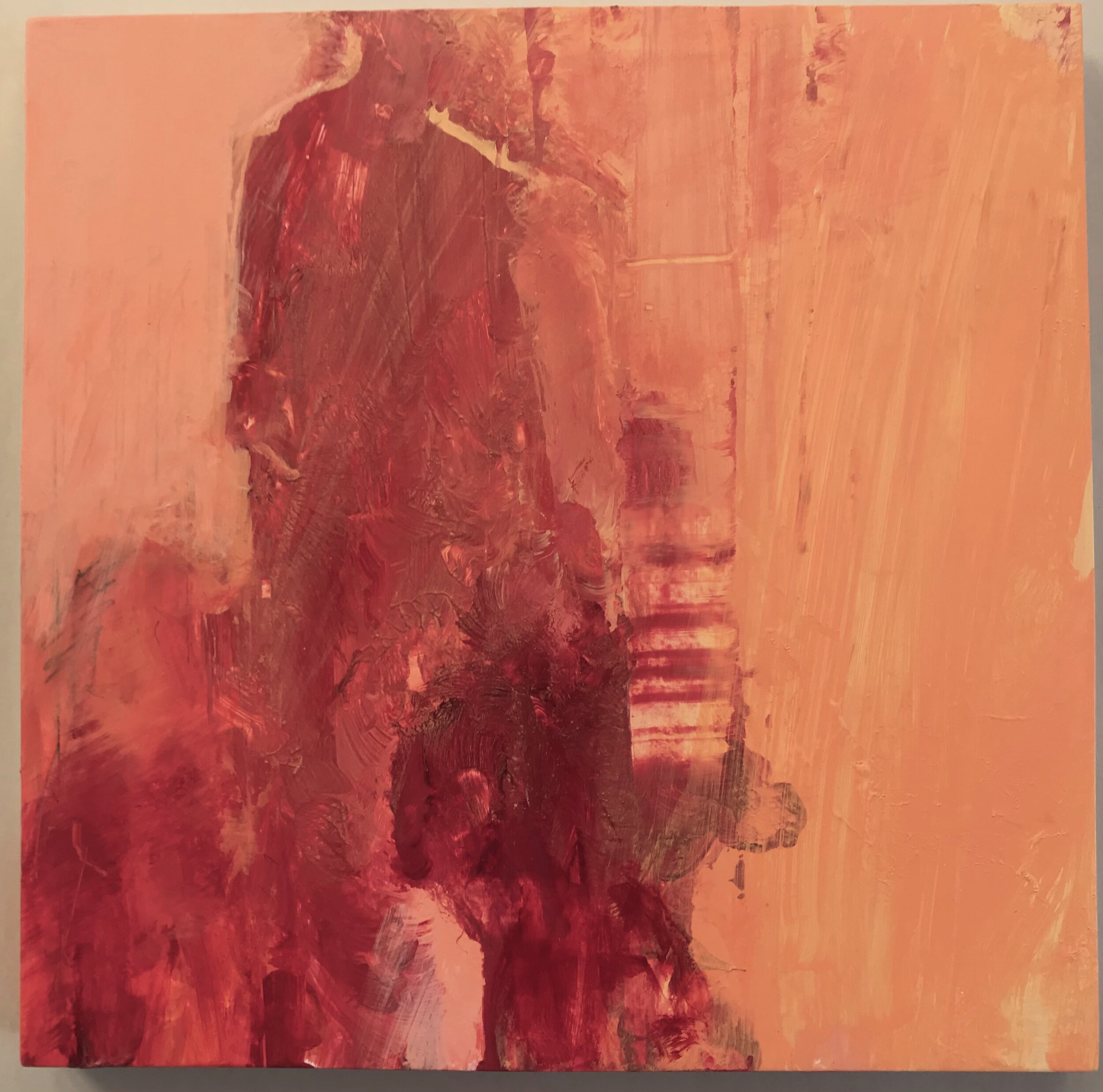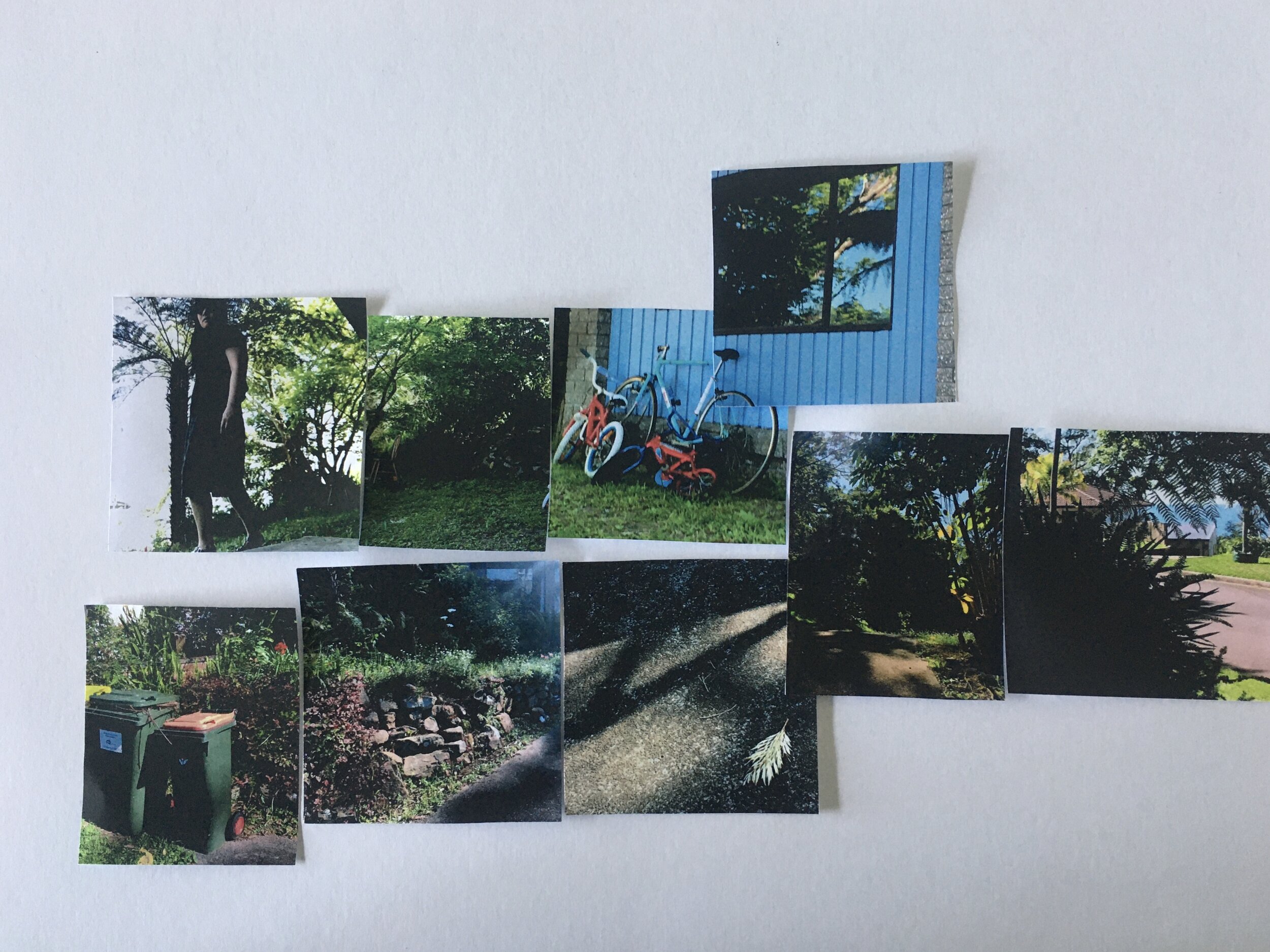Hi Everyone!
Here's an interview with Ken Kewley. I took a workshop with him at the Mount Gretna School of Art. His thoughts on art make so much sense to me. It was a treat to ask him these questions a year after taking the workshop.
Laura Vahlberg: One of the things I took away from your class was this idea of working continuously. I remember you said that it's good not to finish too soon-- to keep going and going. This has been a barrier for me at times because there can be a sense of loss in taking apart something that appears to be working in order to move forward. Can you talk a little bit about how you make pictures over a long period of time? What's the journey like for you?
Ken Kewley: This urging painters to push their work comes from ending up here with so much work that I quit too soon. Because there was something I liked. It’s better to go too far where one is forced to find a new way.
One does not want to make one’s paintings. That has trapped too many artists. It’s best not to be able to see the finish line. Not to know where the finish line is or what the finish line looks like. The finish line should be a surprise.
What is there for the artist to do when they finish a painting? Do another one. But you cannot just do the same thing. You do something different. You don’t worry about style. You don’t think about your work. You will still be there. Though you might not recognize it.
An image happens quickly. This can make one think that the work is done.
The image is made up of shapes. It’s the shapes that most likely could be pushed, strengthened, with more work.
Too often I hear abstraction and representation being spoken of as if they were different things. The abstraction of the work is the arrangement of the shapes. Shapes should not be placed in a way that they would not be placed if the painter was working non objectively. There is representation and there is non objective. Both need strong abstraction.
Children are praised the more their work becomes recognizable. Their sense of abstraction, which is very strong in the beginning, can all but disappear by the end of grade school due to a push to be more real.
To get back to something of what a child had to begin with, art instruction, when it does start, should start with arranging shapes non objectively.
This should go on until it’s well ingrained. Then when working representationally every shape needs to be considered abstractly.
Representational painters can push their work by, from time to time, working non objectively.
Working is continuously rearranging shapes. Rearranging the abstraction.
One does not rearrange things, one rearranges the shapes in things.
Things in themselves have little strength.
First one gathers the shapes. One then strengthens them. Making sure they don’t mush together. Marks must be well contained within shapes. Edges reinforced.
Shapes must be strong enough to hold other shapes and strong enough to be held by still other shapes. They must all hold and be held. They cannot just sit by themselves. Pushing the work is strengthening the shapes, adjusting them, making some lighter, other darker, moving them this way or that to both exert force on and to be able to withstand the force from the other shapes. It is like getting a better grip on a piece of furniture one is carrying. One has to be strong enough, the furniture must be strong enough, and where one is holding it makes a big difference. One often has to adjust one’s grip and have the help of someone else. Shapes need other shapes.
Working continuously does not have to be the same work.
In the workshop we scan and print work out our work and work into the print. We can go further without losing what we have. This push will be there when you start something new.
Abstraction is infinite. A few shapes can be arranged indefinitely. The shapes within the same subject rearranged from painting to painting.
If one has definite shapes, and not too many, it’s not hard to compose them. If not, things can quickly get out of hand and one can find oneself just moving paint around.
That’s when it becomes hard to know when one is finished.
If you have a controllable amount of shapes you can see if they are all working, that they all have a purpose, and that they are not weakening their neighbors.
When I’m trying to get painters to keep working it’s to strengthen their shapes and use them in a way that surprises them. Each time they reach where they have been before they push beyond to something new, something that surprises them. Sometimes it takes awhile for the artist to see that it is still their work and to warm up to it.
I know when I’m teaching if the student’s work surprises me I’ve done something right.
Everything I do must surprise me. What is the point of doing what one does again? Other than for filling an order.
There is nothing to lose, whatever is yours, will come back in another form. But there could be something that is also yours that you had never reached.
With my own work I’m just trying to do the same, trying to push it forward.
LV: What does a typical day in the studio look like for you?
KK: I don’t know what people do all day. One thing I don’t ever do is sit in front of my work and contemplate. For me that’s not working. Working is making a move and reacting to it.
Put down a shape, then a second. When you are putting down a second you must not have any idea about the third. How could you? You should only react to what is there and not think about what is to come.
A painting is not something you see in the distance and as you get closer it gets clearer. One must avoid this step by step approach, blocking in and then filling in. It must be shape by shape. Without knowledge of future moves.
I always have a to-do list of things I’m dreading. I make art to avoid these things for as long as possible.
The one thing I do every morning is I draw into that day’s calendar square. A simple composition. It is what every painting needs no matter how complex. A simple door that invites one in. These drawings take five seconds but they feel like a good day's work.
I don’t make art all day.
I walk, read fiction (no art theory), and look at a lot of images. Make meals.
I’m happiest when being productive. Making one thing after another. Teaching makes me happy since the work is multiplied by the number of artists in the workshop.
It does not matter to me if it’s my work or theirs. It’s being done.
I’m best when I’m confined to a room with only one thing to do. In the studio or in the classroom. Of late I get that on Thursday nights when I collage with painted paper shapes from the model and from those also drawing the model.
And I’ve been spending time carving out a classroom here in my house.
LV: It's been about ten years since you wrote Notes on Color. Are there any other notes you would add to that essay?
KK: That’s the other thing I do. For years I’ve been working on a book mostly about shapes.
That one must render with shapes, with abstraction. Where the same shapes can build one thing, be taken apart, and used to build something else.
One does not take representation and abstract it. That is backwards. One uses abstraction to make representation.
Observational painters who make a mark for everything they observe, when they look even closer and refine their marks, are correcting more than they are composing. If one observes a spot of color and puts down a spot of color eventually the canvas gets filled up and there will be an image but that is not composing. It is staying too much on the surfaces and the contours of the subject. If one can get off both of these and try to describe the subject with as few shapes as possible, light shapes and dark shapes, then one can compose those.
That color theory, anatomy, perspective and all the other things they teach in school to get representation right are minor things. If something is not working it is not those things. It is the abstraction.
LV: Are there shows or workshops that I can mention at the end of the newsletter? Or places readers can see your work in person?
KK: The only workshop scheduled is at Three Pines Studio, Cross Village, Michigan. It’s filled but there is a wait list and always a possibility.
As I mentioned before I am carving out a space in my house to do workshops with four artists at a time. That is in Easton, PA. If anyone finds themselves close I’m happy to have visitors.
In September into October of this year I will have, what I imagine will be, a small survey show at Lehigh Valley Charter High School for the Arts in Bethlehem, Pennsylvania.
Artist: Ken Kewley
Title: Thursday Night Drawing Group II
Date: 2023
Medium: Painted Paper Collage
Size: 8.5" x 11"

